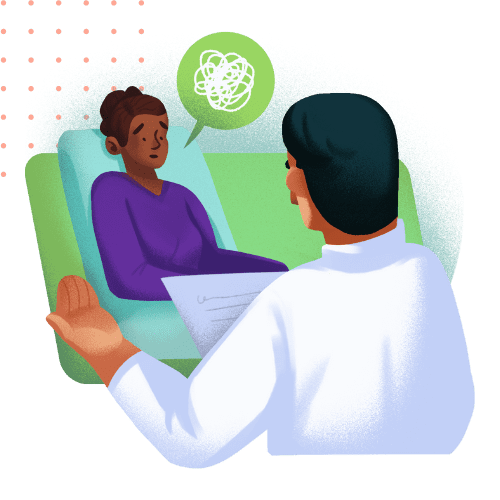Gender Dysphoria
Free Gender Dysphoria Assessment

Create a nurturing environment where identities are celebrated, struggles are understood, and healing begins.
What is Gender Dysphoria Assessment?
Gender dysphoria assessment is a process conducted by qualified mental health professionals to evaluate an individual’s feelings of discomfort or incongruence between their assigned gender at birth and their experienced gender identity.
It involves comprehensive psychological and medical evaluations, exploring the person’s gender identity, history, and related emotional distress. The assessment aims to determine the presence and severity of gender dysphoria and assists in formulating appropriate treatment plans, which may include hormone therapy, gender-affirming surgeries, or counseling support.

Who can derive advantages from this assessment of Gender Dysphoria?
Various individuals can benefit from a gender dysphoria assessment. For transgender or gender nonconforming individuals, the assessment helps validate their experiences, providing access to gender-affirming treatments that can alleviate distress and improve overall well-being. Mental health professionals gain insights into their clients’ struggles, aiding in personalized treatment planning and support.
Additionally, families and support networks benefit from understanding their loved one’s journey, fostering empathy and acceptance. Society also gains by promoting inclusivity and reducing stigma around gender diversity, leading to a more compassionate and supportive environment for all individuals.
Gender Dysphoria Assessment Accuracy

The accuracy of gender dysphoria assessment depends on various factors, including the competence and experience of the professionals conducting the evaluation, the methods used, and the individual’s openness and honesty during the process. When conducted by qualified mental health professionals, the assessment can be highly accurate in identifying and understanding an individual’s gender dysphoria.
However, it’s important to acknowledge that gender dysphoria is a complex and nuanced experience, and misdiagnoses or misunderstandings can occur. It is crucial for the professionals involved to follow ethical guidelines, maintain a non-judgmental approach, and consider the unique experiences of each individual to ensure the most accurate assessment possible
Types of Gender Dysphoria Assessment
Self-report questionnaires
Kinsey Scale Test
Klein Sexual Orientation Grid
The Shively-DeCecco Scale
Close Relationships Scale
Sexual Identity Scale
Handling Gender Dysphoria Issues
Handling gender dysphoria requires a compassionate and supportive approach tailored to each individual’s needs. Here are some essential steps:
- Self-Exploration: Encourage self-discovery and understanding of gender identity. Providing a safe and non-judgmental space for individuals to explore their feelings is crucial.
- Seek Professional Help: Encourage seeking guidance from qualified mental health professionals experienced in gender issues. Therapy can offer coping strategies and emotional support.
- Gender-Affirming Support: Affirm an individual’s gender identity, name, and pronouns, as it can have a positive impact on their mental well-being.
- Medical Transition (if desired): For those seeking medical intervention, access to hormone therapy or gender-affirming surgeries can be essential for aligning physical appearance with gender identity.
- Build a Supportive Network: Foster a supportive environment by involving family, friends, or support groups to create a strong support network.
- Educate and Raise Awareness: Promote awareness of gender diversity and challenge stigma through education and open discussions.
- Develop Coping Strategies: Help individuals develop coping strategies to deal with challenges, discrimination, or negative reactions they may encounter.
- Be Patient: Handling gender dysphoria is a journey that takes time. Encourage patience and remind individuals that it’s okay to take things at their own pace.
Remember, each person’s experience is unique, so it’s crucial to approach gender dysphoria with empathy, respect, and an open mind. Encouraging self-acceptance and providing unconditional support can make a significant difference in an individual’s well-being.

